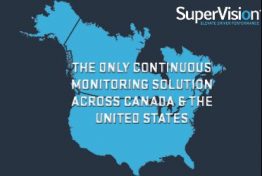|  | |
Industry Leaders Unpacking the Complex Transformation of Fleet Management to Mobility Solutions As the world around us becomes increasingly connected and we continuously explore new technologies, this session will leave you better informed and equipped to move your business into the future. Join us as we ask our panel of subject matter experts key questions to better understand the impact that the mobility wave is having on the automotive and fleet industry today and in the future. Moderator: Mary Sticha
Panelists: Brendan Keegan, John Korte and Ahsan Rahim Register now!
|
|
 |  | |
Whether a business has a fleet of trucks or a few salespeople on the road, Negligent Entrustment poses a multi-million dollar threat. Many companies do not realize they have an important duty of care to do all they can to ensure they put only safe drivers on the roads. If they fail to do so they could face costly lawsuits as a result of an accident. Download a free whitepaper from SuperVision to learn more about avoiding negligent entrustment lawsuits.
|
|
 |  | |
Fleet professionals know that safety is the most important issue they are facing today. With an average of 20% of fleet drivers having a crash this year – each costing upwards of $70,000 – developing a ‘Culture of Safety’ in a fleet department often includes MVRs, Telematics, Online Driver Training and Additional Training for Offending Drivers. Bridge the gap in your driver training programs: click here for a free consultation from Frontline Driver Training to see how easy it is to implement their ‘Success on the Road’ driver training to your existing programs.
|
|
 |  | |
Trade shows are often so jam-packed with events and information, they can be a dizzying experience, and it’s a certainty that you’re going to miss most of the content. But there are things you can do to be sure you get the most out of them that’s humanly possible, and it starts with preparation before you go. If it isn’t already, this article – “18 Helpful Tips for Getting the Most Out of an Industry Conference” – should be a classic. It’s a handy check list for even the most seasoned trade show attendee. Here’s just a sample: “Review the agenda. Set a goal for what you’d like to learn at the conference, and use the agenda to devise a plan specifically tailored to that goal. Make sure to attend conference-wide events like keynote addresses…When it comes to smaller sessions, consider both the speaker and the subject matter. Highly tactical sessions are generally useful to attend regardless of who leads them. However, sessions less directly related to your profession can be valuable as well if they’re led by an industry figure you’re angling to meet. Read the article at Hubspot.com.
|
|
 |
|
Truly Continuous Fleet Monitoring | |
|
|
 By Shannon McNamara A continuous fleet monitoring solution can have various meanings across different providers, and across the nation. In general, fleet monitoring carries the definition of continuous driver license monitoring for commercial fleets. However, the truth is the capabilities of fleet driver monitoring from provider to provider can vary, and if you are not paying attention, these differences can put your organization at risk. Consider the following when determining a fleet monitoring solution, especially when your fleet drivers are operating across the United States and Canada. READ MORE |
|
 Four leading sponsors, 12 different certifications By Kevin J Fisher, MBA, CAFM, CTP, Senior Consultant, Mercury Associates This question comes up often, particularly with more-tenured fleet professionals and frequently with the constant budget pressures in many of today’s organizations, both in the private and public sectors. Today, training is available in the form of webinars, online training modules and testing, live classroom sessions at various industry association conferences, local colleges and universities. In my experience, an investment in fleet management training and certifications pays dividends in the long run for both the organization and the employee. These dividends come in the form of more engaged and motivated employees, who are better equipped to deal with the constant pace of change and innovation in the marketplace. READ MORE |
|
 By Todd Mouw, President, ROUSH CleanTec According to a University of California Riverside study, diesel-fueled medium- and heavy-duty vehicles are the number one source of nitrogen oxide (NOx) emissions in almost every single metropolitan region in the U.S. NOx is so harmful to human health and the environment that the federal government requires it to be regulated. Think about it this way: every time drivers wait outside a diesel vehicle, they are exposed to soot and NOx. A key component of reducing a fleet’s emissions and carbon footprint, without losing sight of the bottom line, is propane autogas. Current propane technology enables commercial fleets to order the number of commercial vehicles needed, whether that’s one, a dozen or 100. READ MORE |
|
| |

